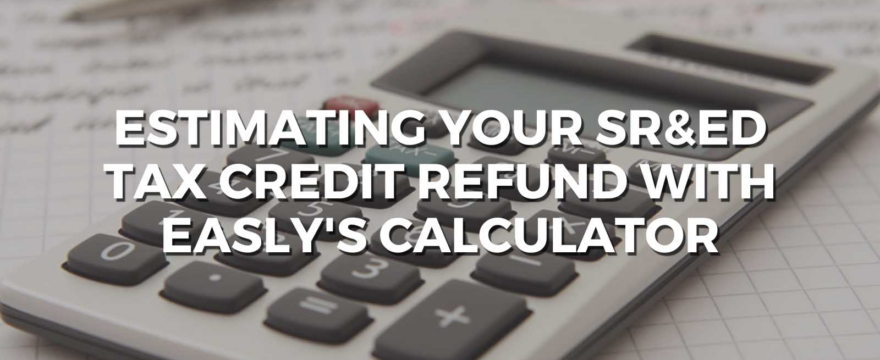
The Scientific Research and Experimental Development (SR&ED) tax credit program provides refundable and non-refundable tax credits based on the amount companies spend on eligible research and development (R&D) work. This program is available to all taxpayers, regardless of their incorporation status. For refundable credits, eligible taxpayers receive a tax refund, even if they don’t owe taxes. Estimating your organization’s SR&ED tax credit refund can be challenging, as numerous factors influence your refund amount. Below, we will walk you through some of the other details associated with the SR&ED program and then provide you with a tool to do your own SR&ED tax credit calculation! Continue reading to learn more.
What Companies Qualify for SR&ED?
Simply put, Canadian individuals, trusts, and corporations involved in research and development (R&D) projects may all qualify for SR&ED. If you run your business as a partnership, you may also be eligible for SR&ED tax credits; however, you’ll have to claim these credits on your individual tax return by using a portion of the partnership’s qualified expenses.
Which Projects are Eligible for SR&ED?
As suggested by the name of the Scientific Research and Experimental Development (SR&ED) tax credit program, the main focus of this program is to provide tax credits for R&D work. This work may include basic and applied research and research purely for the advancement of science or practical applications.
For instance, if your Canadian company participates in experimental development and is currently working on a project that leads to technological advancement, you may be eligible for SR&ED. The SR&ED program will then assist in covering the costs associated with full-time salaries, materials, capital expenditures, overhead, and numerous other R&D-related activities by providing an annual refund for the refundable tax credits.
Regarding SR&ED eligibility, many projects and types of businesses may claim this tax credit. However, it’s essential to be aware of some of the activities that do not qualify. These activities include:
- Market research before starting a project
- Promotions
- Social science research projects
- Humanities research projects
- Style changes
- Routine tasks such as quality control, data collection, commercial production, etc.
- And prospecting, exploring, or production (specifically for mineral, petroleum, and natural gas sectors)
While these activities do not qualify for SR&ED, keep in mind that your R&D project does not need to succeed in order to claim credits for eligible activities. As long as your organization’s efforts have been toward a legitimate research project, you may still qualify for SR&ED tax credits, regardless of the outcome.
What Does SR&ED Offer?
The SR&ED program offers organizations refundable and non-refundable tax credits. Companies that earn refundable SR&ED tax credits are eligible for a refund, even if they do not claim any revenue. While this is a somewhat simplified explanation of SR&ED’s tax credit calculation, understanding the specific details of the total tax credits your company will receive from SR&ED depends on a few factors. For instance, the provincial/territorial tax credit allotment varies depending on your jurisdiction. Furthermore, the amount of credits received can differ across eligible expenditures. These and several other variables affect the result of your company’s SR&ED tax credit calculation.
Fortunately, if you’re looking for a simple way to calculate your organization’s estimated SR&ED refund, Easly has you covered! Easly’s SR&ED Tax Credit Calculation tool is simple to use – all you need to do is plug in a few variables, and you’ll have an estimate of your SR&ED refund in seconds!
Effortlessly Finance Your SR&ED Tax Credits with Easly
SR&ED tax credits are paid in arrears, which can make it challenging for companies to attain the financial support they need to continue their research and development projects in a timely manner. By partnering with Easly, your organization can immediately access your expected SR&ED tax credit refund. At Easly, we provide non-dilutive capital on a schedule that suits your company’s needs. Once you have determined your estimated SR&ED tax credit calculation, you can use our Easly Cash Flow Calculator to determine how much funding you can receive from Easly!
Contact Easly today to get started on financing your SR&ED tax credits!
.png)
.png)
.png)
